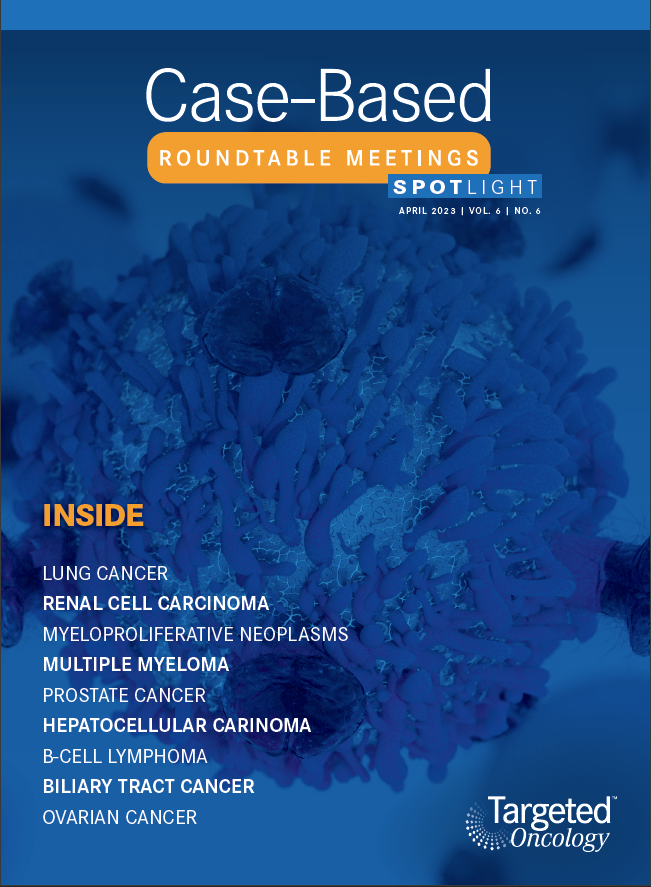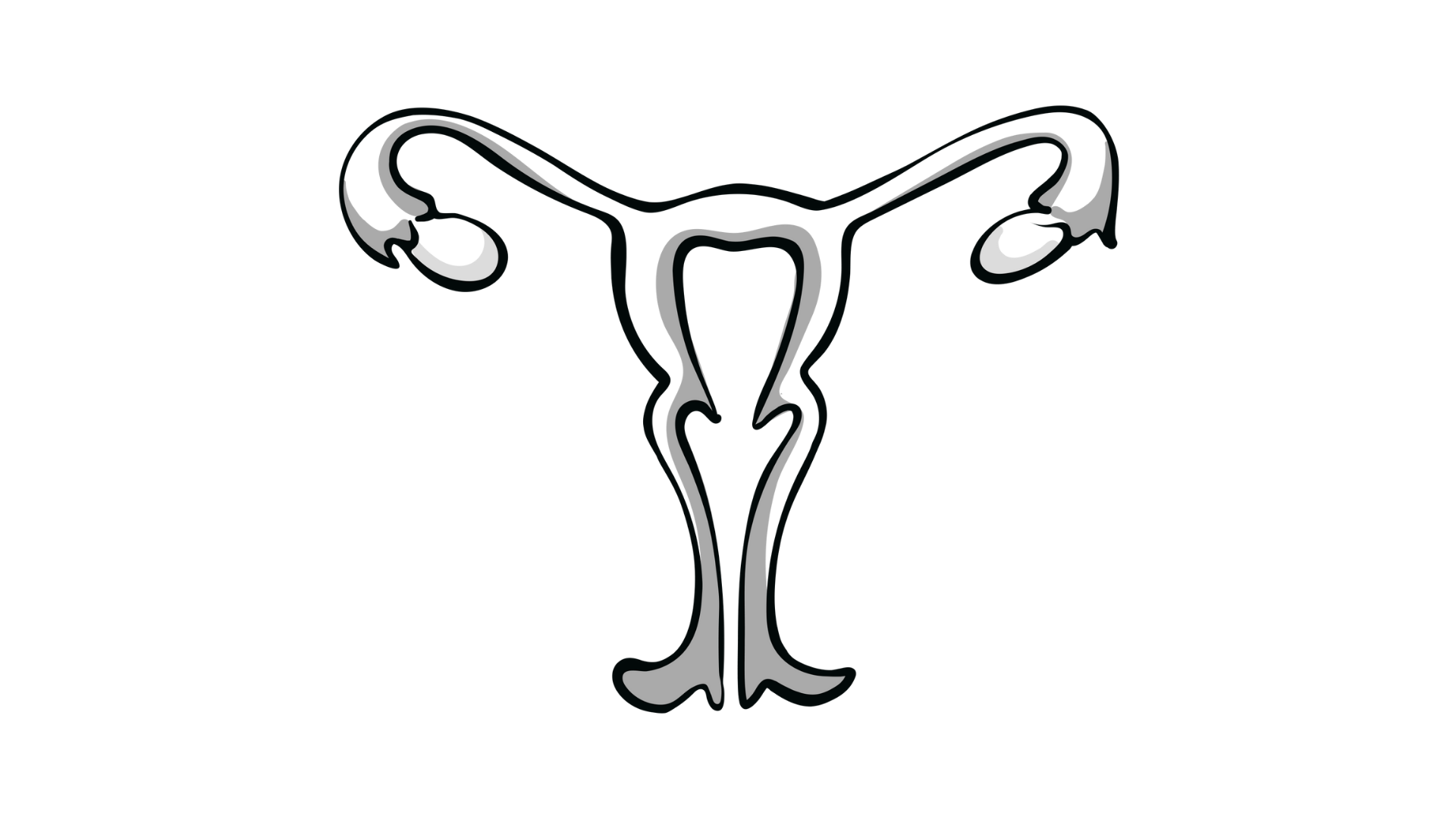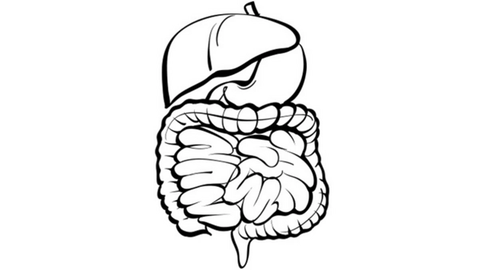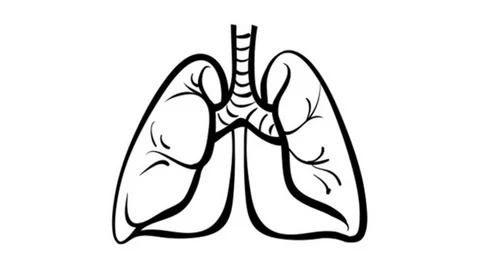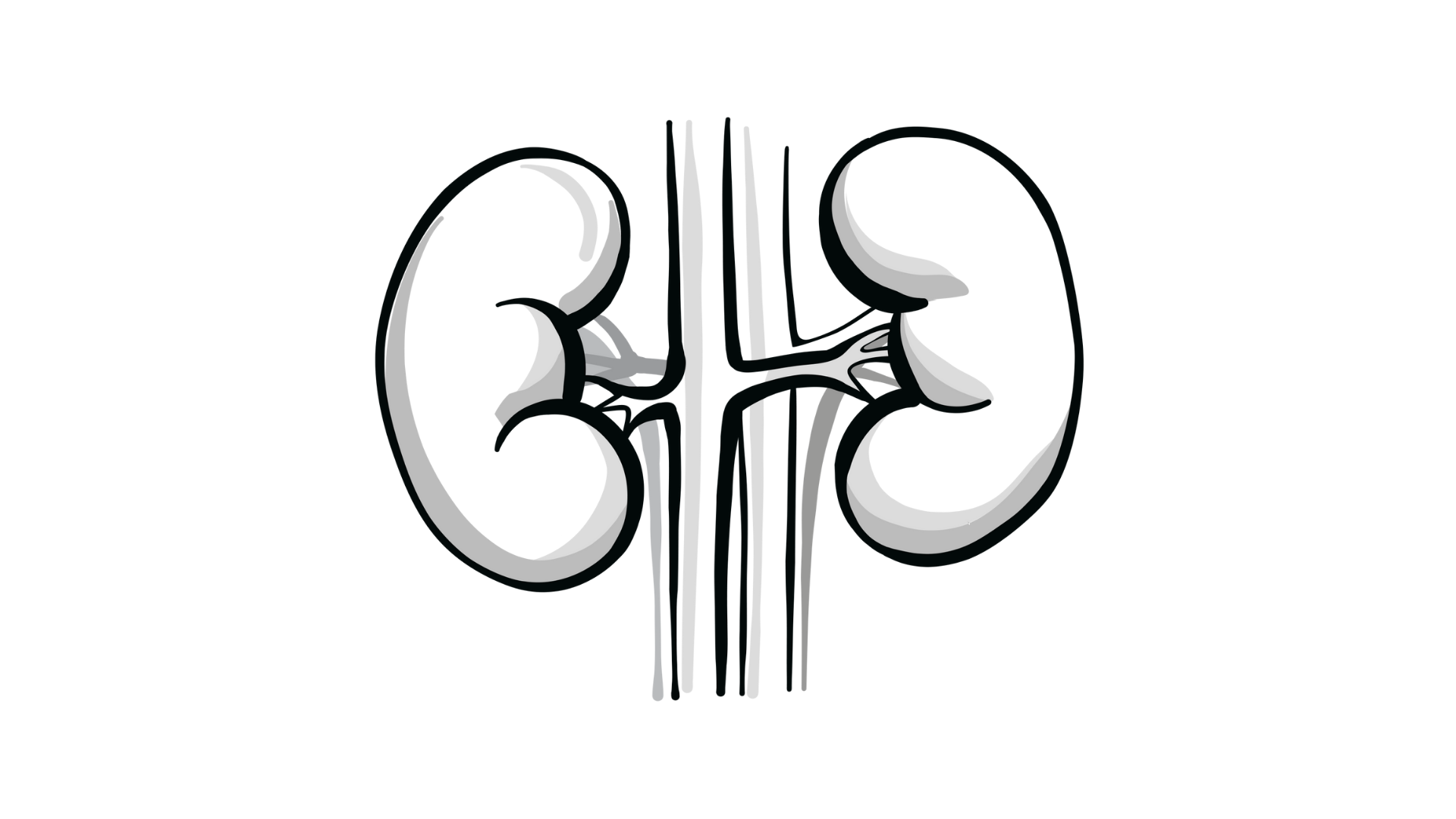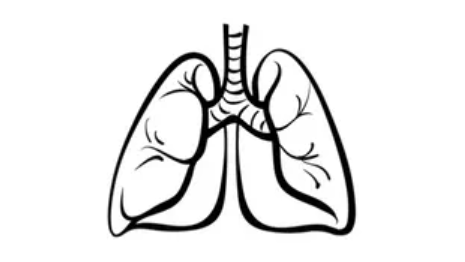Fonseca Assesses Targeting BCMA in Relapsed/Refractory Multiple Myeloma
During a Targeted Oncology™ Case-Based Roundtable™ event, Rafael Fonseca, MD, discussed the treatment paradigm for relapsed/refractory multiple myeloma and how the BCMA target now plays a role.
Rafael Fonseca, MD
Director
Innovation and Transformational Relationships
Mayo Clinic
Scottsdale, AZ
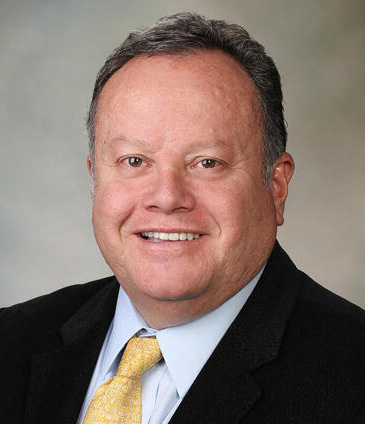
CASE
- A 63-year-old man received a diagnosis 8 years ago of multiple myeloma (IgGκ) presented with penta-refractory disease progression.
- He received 4 prior lines of therapy that included autologous stem cell transplant, 2 proteasome inhibitors (PIs), 2 immunomodulatory drugs (IMiDs), and 1 anti-CD38 antibody.
- He lives in a rural community.
- Medical history includes hypertension controlled with lisinopril.
- ECOG performance status: 1
- He asked about chimeric antigen receptor (CAR) T-cell therapy, but after counseling, he opted to pursue an alternative therapeutic because of the length of waiting lists at accessible institutions.
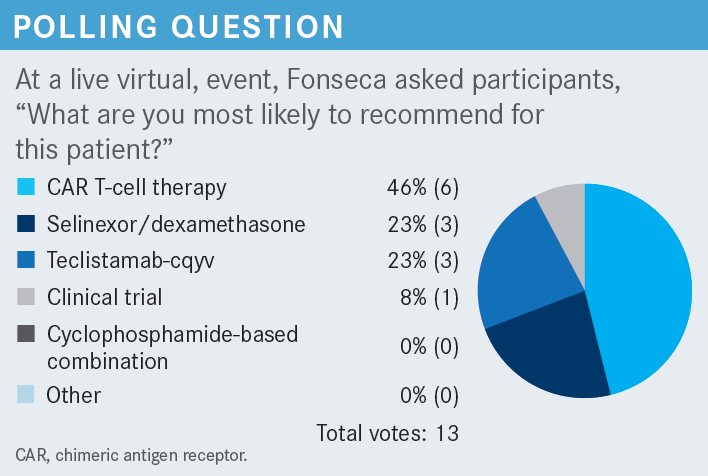
Targeted OncologyTM: What are the latest discussion topics around the treatment of patients with relapsed/refractory multiple myeloma (RRMM)?
FONSECA: [A patient like] this is typical for what we anticipate in a patient with multiple myeloma. More and more, we’re seeing patients in our practice who come with multiple lines of therapy, and probably more importantly now, multiple exposures to the various agents. In fact, there was a meeting about a month ago with the FDA where the whole meeting was about the design of clinical trials.
A big push at that meeting was that we should not talk about lines of therapy, but we should talk more about exposure to the various agents. This is relevant because that dictates essentially not just what happens because of several lines of therapy, but what we anticipate for the possibility of resistance to a specific drug. [There are strong] peaks and intensity [with this] disease, but ultimately [we need to] somewhat shorten the intervals between the various phases of disease control.1
This still holds true to this day, but…1 [thing to note] is that the first remission [for a patient] can be significantly longer than anything that was published back in 2013.1 Our ability to induce long remissions is much greater than it has ever been. The second [thing to note] is—although this is certainly not universal—with some of the immunotherapies, the duration of second or third or fourth or fifth remission might end up being as long as, if not longer than, some of the previous ones. And some of them are quite durable. I would anticipate not quite what we have seen with CAR T-cell therapies in the areas of lymphoma, but still the possibilities are there for quite durable responses.
How is utilizing the B-cell maturation antigen (BCMA) important to treating these patients?
This is a B-cell–specific antigen associated with signaling that normally occurs in B cells.2 But it turns out that BCMA is highly conserved in very large B cells and primarily in plasma cells and perhaps a little bit more in malignant [cells], although the normal plasma cells do have this as part of normal signaling. This has proven to be an excellent target for a number of approaches.
Some time ago, I used to say we shouldn’t talk about BCMA-targeting agents because that just tells you about the anchor, the target. We should be talking more about the mechanism of action. I think that holds true [because] it’s not the same to talk about an ADC [antibody-drug conjugate] vs a bispecific or CAR T-cell therapy. But having said that, there are some important considerations. The first one is, given that BCMA has been at the forefront for targets that we developed agents against, immediately and practically, we’re facing questions about sequencing. “Can you use a BCMA agent, such as an ADC, before you use a CAR T-cell therapy?” And so forth, with the permutations of that [question].
However, we now have more targets for the bispecifics and the CAR T-cell therapies. Those targets include GPRC5D, against which we have bispecifics and CAR T-cell therapies, and FCRH5, which I was joking at the ASH [American Society of Hematology] meeting [that] you could test the “myeloma doctor mini-mental status” with this because there are so many names to remember. However, [FCRH5] a target that has been used to develop another bispecific, which is cevostamab [BFCR4350A].
Lastly, even though I said BCMA is highly conserved, as with every target of every cancer, there is a possibility of resistance [to] bilateral expression. This has been already documented in the medical literature. Perhaps one of the most interesting studies was…where they did single-cell sequencing analysis, and the bottom line is that they found that [some clones of cells don’t] express BCMA.3
As we continue to make progress in the fight against myeloma, perhaps one of the things we’re going to end up doing is combination-based strategies. We will talk about some of the clinical data that support what we have available now with BCMA-targeting agents.
Interestingly, BCMA has now made it all the way to the NCCN [National Comprehensive Cancer Network] guidelines.4 Guidelines for patients who have had previous treatment, and therapies for patients with late relapses are mentioned [in them now]. We [also] have the 2 commercial CAR T-cell therapies, idecabtagene vicleucel [Abecma] and ciltacabtagene autoleucel [Carvykti], but more recently, we also have [teclistamab-cqyv (Tecvayli)].
We’re having all these emails back and forth within our institutions [now] because we’re chomping at the bit to be able to use [BCMA therapies] commercially. Beyond the FDA approval, there are a lot of steps that need to happen, but the reality is it’s right there. It’s happening, and [these therapies are] available for patients.
Can you discuss the recent approval for teclistamab in the context of other therapies?
[Teclistamab was] approved on October 25, 2022, by the FDA [and] is the first bispecific BCMA-targeting CD3 T-cell engager.5 The caveat is [it’s indicated for patients with] relapsed/refractory myeloma after 4 or more prior lines of therapy, which needs to include a PI, an IMiD, and an anti- CD38 monoclonal antibody.
[With an] ADC…it binds to BCMA and then it has a payload [it delivers].2 In this case, the one [BCMA ADC] is belantamab mafodotin [Blenrep], which has a microtubule disrupter. That was one of the ways...we could approach myeloma therapeutics. The CAR T-cell therapies were the first not only to demonstrate the activity but also ultimately led to the approval of this and both commercial CAR T-cell therapies for myeloma-target BCMA.6
We have bispecific antibodies with multiple targets but the first one that has crossed the finish line is teclistamab, which targets BCMA. We also have other antibodies that are coming behind it and other targets that are coming with other antibodies.
Can you discuss the evidence for efficacy of teclistamab in patients with RRMM?
Approval for teclistamab was supported by the data from MajesTEC-1 [NCT04557098], a...single-arm, multicohort, open-label [phase 1/2] study.7 In this trial, 110 patients [are currently under] study and these patients with advanced myeloma on this treatment showed efficacy for this compound.
[Early results] have already been published in the New England Journal of Medicine, with the schedule for administration is starting with step-up doses of 0.06 mg/kg and then 0.3 mg/kg; then they will go up to 1.5 mg/kg. The drug was administered on a weekly schedule and was given subcutaneously. That’s how this trial was designed, with the primary end point being overall response rate [ORR], and then secondary end points included duration of response [DOR], very good partial response [VGPR], complete response [CR], time to response [TTR], progression-free survival [PFS], and overall survival [OS].
These are the demographics of the patients who are representative [of patients with] myeloma, with a median age of 64.7 years. We have 15% of patients [older than 75 years], which we can talk about more because one of the interesting things about bispecifics—and CAR T-cell therapies, for that matter—is that there may be fewer limitations when it comes down to age and who may be a candidate for these types of therapies. [For a patient with] refractory status, [they noted] the triple class refractory to 5 drugs in about 30% of the patients.
The drug works rapidly, as you have a median TTR of 1.2 months, and the median DOR for these patients was 18.4 months [95% CI, 14.9-not estimable].7 If you look at comparative data, save for real-world evidence, [from] some of the studies...out there for patients [with disease this advanced], most of the patients will have a median DOR somewhere between 6 and 9 months. Teclistamab is clearly superior. The PFS is 11.3 months [95% CI, 8.8-17.1], and that includes responders and nonresponders. Without maturity, the OS is at 18.3 months [95% CI, 15.1-not estimable].
For ORR, it’s interesting that there’s less of a gradient than what we see sometimes with chemotherapy.7 You see ORR reported at 63% [95% CI, 55.2%-70.4%]. Most patients responded quite deeply. We have a significant fraction of patients that had deep responses, so CR was close to 40%. VGPR was better, in close to 60% of patients, which is interesting in that it’s a little bit more dichotomous.
This is not a completely accurate comparison, but in many ways, I think of the outcomes that we are seeing in some other trials with CAR T-cell therapies and bispecifics and a little bit what you see with allogeneic transplant approaches, which are more binomial. There’s that first space, but then some of the people do better and can do well.
What are the safety considerations for teclistamab in patients with RRMM?
All patients experienced some adverse events [AEs].7 Most of them were not serious AEs, but people commonly expressed hematologic toxicity, so neutropenia, anemia, those things, of course. One of the things to highlight—and we’ll talk more about that—is infections. Infections were seen in many patients, and I think this is one of the things that we feel the need to better understand and [know] how to mitigate and prevent. Grade 3/4 [infections] were [present in] up to 44% of patients. Likewise, hypogammaglobulinemia was seen in a large fraction of patients, at 75%.
It’s important to recognize that this trial [was ongoing during the peak of COVID-19]. So there were 12 COVID- 19–related deaths, but there were other ones [with complications] like pneumonia, hepatic failure, and progressive multifocal leukoencephalopathy.7 So these are things that we need to monitor closely as we go forward. My hope would be that as we’ve learned to monitor things like infections in the setting of transplant and other CAR Ts, perhaps preventive strategies could work here as well.
CRS [cytokine release syndrome] was seen in 72% of the patients, but only 1 patient had a grade 3 or 4 event.7 As more people are learning how to use this and the strategies to maybe do prophylaxis with some of the agents—[which] is not mentioned...in the package insert—potentially people are going to start doing things like that.8 We’re hoping that it’s going to be more palatable for more widespread use.
The package insert comes with a reference to CRS as well as to ICANS [immune effector cell–associated neurotoxicity syndrome].8 The CRS is mentioned in 72% of patients, with grade 3 only in 0.6%. Neurologic toxicity at grade 3/4 was only in 2.6%, and ICANS was reported at 6%. There are a number of AEs that have been seen with regard to neurologic toxicity: headaches, some motor dysfunction, and sensory neuropathy as well—this gets confusing because there are patients who have prior exposure to bortezomib [Velcade]— and then encephalopathy in a fraction of our patients.
There are some practical considerations regarding the dosing and the CRS- and neurotoxicity-preventive strategies.8 A lot of what is being done includes step-up dosing for the medications. We have the step-up doses, as I mentioned, in the package insert: 0.6, 0.3, and 1.5 mg/kg. The hope is that you’re in the first phase of administration of some of those drugs. This will alleviate some of the risk associated with CRS. This drug is not the only one.
There are recommendations regarding premedication, [including] how to administer it and the use of corticosteroids, [histamine] H1 receptor antagonists, [and] antipyretics.8 Because of the risk of CRS and neurologic toxicity, it is recommended that patients be hospitalized for 48 hours after the administration of all the doses [on] its step-up dosing schedule.
I don’t think this is as clear because of a number of things, including reimbursement.... It doesn’t come as a mandate that it must happen, so you might see different hospitals and oncology groups manage this in different ways. Particularly, not all of them require, I suspect, hospitalization of patients.
REFERENCES
1. Kurtin SE, Bilotti E. Novel agents for the treatment of multiple myeloma: proteasome inhibitors and immunomodulatory agents. J Adv Pract Oncol. 2013;4(5):307-321.
2. Yu B, Jiang T, Liu D. BCMA-targeted immunotherapy for multiple myeloma. J Hematol Oncol. 2020;13(1):125. doi:10.1186/s13045-020-00962-7
3. Samur MK, Fulciniti M, Aktas Samur A, et al. Biallelic loss of BCMA as a resistance mechanism to CAR T cell therapy in a patient with multiple myeloma. Nat Commun. 2021;12(1):868. doi:10.1038/s41467-021-21177-5
4. NCCN Clinical Practice Guidelines in Oncology. Multiple myeloma, version 3.2023. Accessed December 15, 2022. https://bit.ly/2T0mDYS
5. FDA approves teclistamab-cqyv for relapsed or refractory multiple myeloma. FDA. Updated October 25, 2022. Accessed December 15, 2022. https://bit. ly/3ZRsGhf
6. Lancman G, Sastow DL, Cho HJ, et al. Bispecific antibodies in multiple myeloma: present and future. Blood Cancer Discov. 2021;2(5):423-433. doi:10.1158/2643- 3230.BCD-21-0028
7. Moreau P, Garfall AL, van de Donk NWCJ, et al. Teclistamab in relapsed or refractory multiple myeloma. N Engl J Med. 2022;387(6):495-505. doi:10.1056/ NEJMoa2203478
8. Tecvayli. Prescribing information. Janssen Biotech Inc; 2022. Accessed December 15, 2022. https://bit.ly/3ZUOubU
